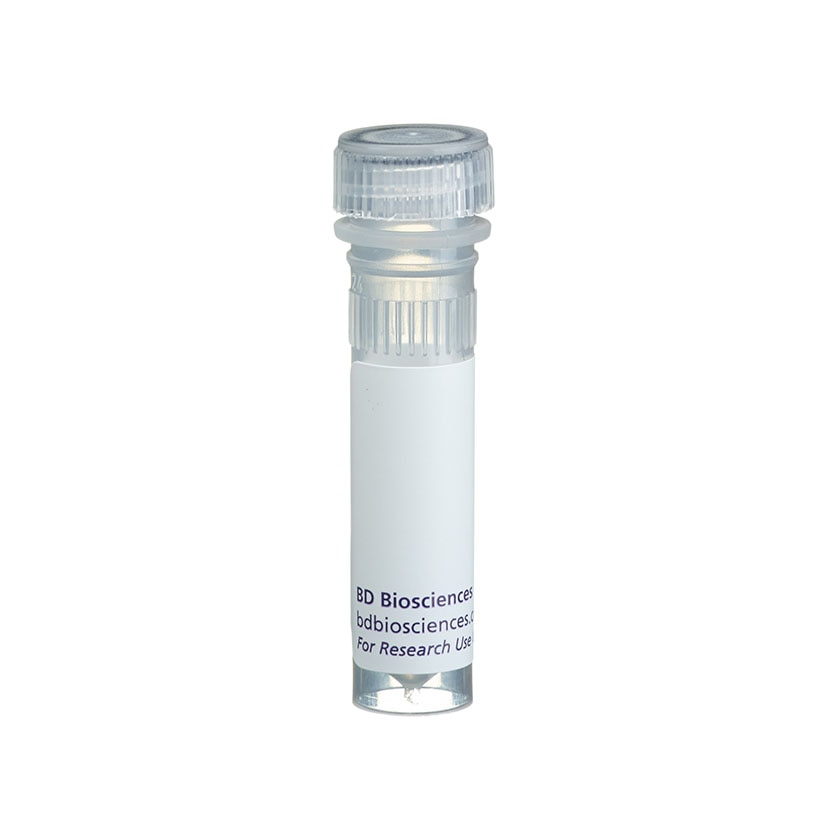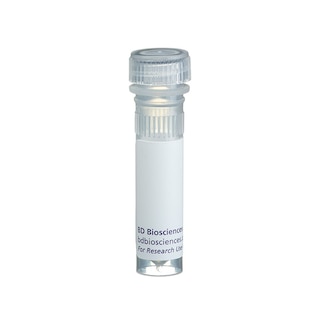Old Browser
This page has been recently translated and is available in French now.
Looks like you're visiting us from {countryName}.
Would you like to stay on the current country site or be switched to your country?


Regulatory Status Legend
Any use of products other than the permitted use without the express written authorization of Becton, Dickinson and Company is strictly prohibited.
Preparation And Storage
Product Notices
- Since applications vary, each investigator should titrate the reagent to obtain optimal results.
- Please refer to www.bdbiosciences.com/us/s/resources for technical protocols.
The R1-2 monoclonal antibody specifically binds to α4 chain (CD49d), which is expressed as a heterdimer with either of two β, β1 or β7 (also known as βp). The α4β1 integrin (VLA-4, CD49d/CD29) is expressed on most peripheral lymphocytes, thymocytes, and monocytes; while the α4β7 integrin (LPAM-1) is expressed on peripheral lymphocytes, but on only a small subset of thymocytes. These integrins mediate a variety of cell-cell and cell-matrix interactions, recognizing the ligands VCAM-1 (CD106) and fibronectin. There is evidence that levels of VLA-4 expression regulate the transendothelial migration of T lymphocytes into inflamed tissues. Integrin α4β7 also preferentially binds to the mucosal vascular addressin, MAdCAM-1. The R1-2 antibody blocks some α4 integrin-mediated binding functions. In combination with mAb 9C10 (MFR4.B) (Cat. No. 553313), binding of VLA-4 expressing cells to VCAM-1 can be almost completely inhibited.
Development References (8)
-
Andrew DP, Berlin C, Honda S, et al. Distinct but overlapping epitopes are involved in alpha 4 beta 7-mediated adhesion to vascular cell adhesion molecule-1, mucosal addressin-1, fibronectin, and lymphocyte aggregation. J Immunol. 1994; 153(9):3847-3861. (Biology: Blocking). View Reference
-
Baron JL, Reich EP, Visintin I, Janeway CA Jr. The pathogenesis of adoptive murine autoimmune diabetes requires an interaction between alpha 4-integrins and vascular cell adhesion molecule-1. J Clin Invest. 1994; 93(4):1700-1708. (Biology: Blocking, Immunofluorescence). View Reference
-
Brocke S, Piercy C, Steinman L, Weissman IL, Veromaa T. Antibodies to CD44 and integrin alpha4, but not L-selectin, prevent central nervous system inflammation and experimental encephalomyelitis by blocking secondary leukocyte recruitment. Proc Natl Acad Sci U S A. 1999; 96(12):6896-6901. (Biology: Blocking). View Reference
-
Chisholm PL, Williams CA, Lobb RR. Monoclonal antibodies to the integrin alpha-4 subunit inhibit the murine contact hypersensitivity response. Eur J Immunol. 1993; 23(3):682-688. (Biology: Blocking). View Reference
-
Ferguson TA, Kupper TS. Antigen-independent processes in antigen-specific immunity. A role for alpha 4 integrin. J Immunol. 1993; 150(4):1172-1182. (Biology: Blocking). View Reference
-
Holzmann B, McIntyre BW, Weissman IL. Identification of a murine Peyer's patch--specific lymphocyte homing receptor as an integrin molecule with an alpha chain homologous to human VLA-4 alpha. Cell. 1989; 56(1):37-46. (Immunogen: Blocking, Immunoprecipitation). View Reference
-
Holzmann B, Weissman IL. Peyer's patch-specific lymphocyte homing receptors consist of a VLA-4-like alpha chain associated with either of two integrin beta chains, one of which is novel. EMBO J. 1989; 8(6):1735-1741. (Biology: Immunoprecipitation). View Reference
-
Kilshaw PJ, Murant SJ. Expression and regulation of beta 7(beta p) integrins on mouse lymphocytes: relevance to the mucosal immune system. Eur J Immunol. 1991; 21(10):2591-2597. (Biology: Blocking). View Reference
Please refer to Support Documents for Quality Certificates
Global - Refer to manufacturer's instructions for use and related User Manuals and Technical data sheets before using this products as described
Comparisons, where applicable, are made against older BD Technology, manual methods or are general performance claims. Comparisons are not made against non-BD technologies, unless otherwise noted.
For Research Use Only. Not for use in diagnostic or therapeutic procedures.
Report a Site Issue
This form is intended to help us improve our website experience. For other support, please visit our Contact Us page.
